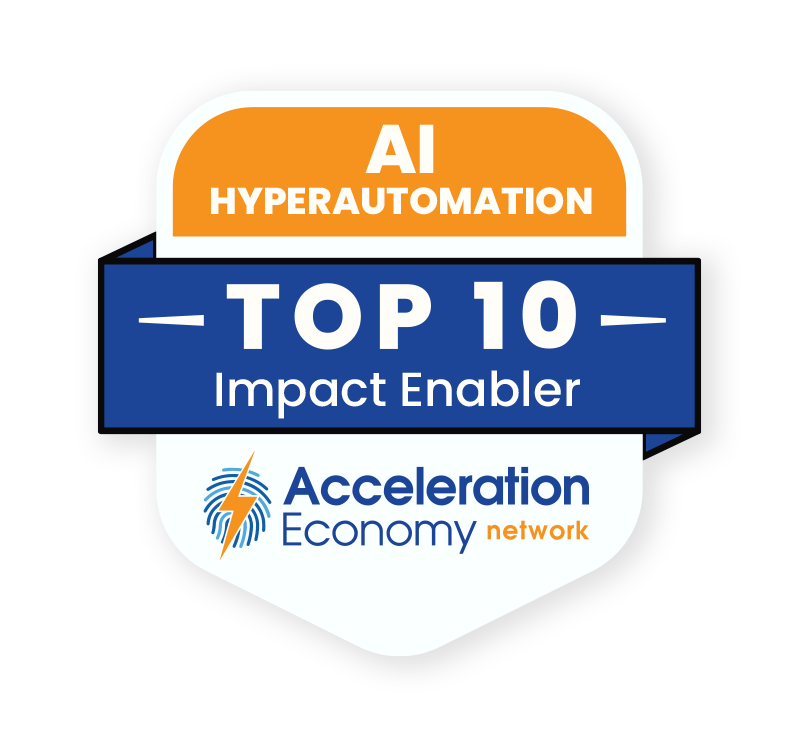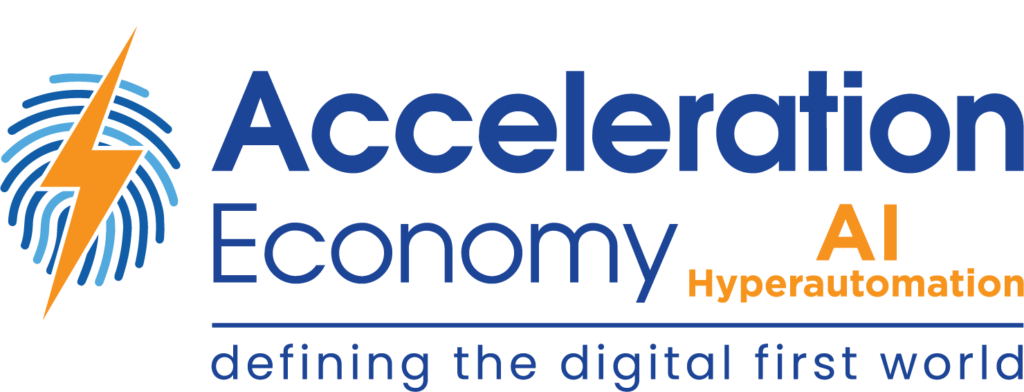The goal of retail healthcare has always been to make healthcare more accessible and convenient for consumers. If you’re the average consumer, the intersection of retailers providing essential, low-cost healthcare services is nothing new — especially if you’ve ever stopped by Walmart to pick up prescriptions, Walgreens to get a seasonal flu shot, RiteAid to purchase an FDA-approved blood pressure monitor, or CVS’s convenient MinuteClinic for a walk-in health screening.
With the advent of hyperautomation’s ability to scale processes, new possibilities are available for all stakeholders — including retailers, staff, and above all, patients. From artificial intelligence (AI) and real-time analytics optimizing the supply chain and ML-assisted patient screening/diagnosis platforms in-store to automated appointment-setting from the convenience of a smartphone, the next-gen processes enabled by hyperautomation represent a new nexus of change in the retail healthcare paradigm.
Let’s explore where retail and healthcare currently intersect, then look at several new frontiers where hyperautomation is set to enhance the value of human expertise and data in retail healthcare environments.
Which companies are the most important vendors in AI and Hyperautomation? Click here to see the Acceleration Economy Top 10 AI/Hyperautomation Short List, as selected by our expert team of practitioner-analysts
Where Retail and Healthcare Intersect
Retail and healthcare intersect at the point where healthcare services and products are delivered through retail outlets, such as drugstores, supermarkets, and department stores. This can include services such as vaccinations, health screenings, and telemedicine consultations, as well as the sale of over-the-counter medications, medical equipment, and other health-related products.
Another growing segment is online labs. Consumers can now order many lab tests directly from companies such as Quest Diagnostics. Rather than wait in line at an urgent care facility or on the phone, patients can now easily set up appointments at a time convenient for them and be attended to immediately, then check for test results right from their smartphone. In other cases, at-home test kits are mailed to consumers, who follow a few steps and then send the tests back and check the results online. (If there is one thing that Covid has taught us, it’s how to take an at-home medical test.) The entire order process from beginning to end is hyper-automated and available online or on mobile.
With traditional healthcare providers both understaffed and overwhelmed with consumer demands, retail healthcare has become, in effect, a logical way of “outsourcing” healthcare. After all, retail has always been an industry that remains at the forefront of accommodating a large volume of consumers and a diversity of needs. With onsite physicians and medical staff available at retailers, the blending of healthcare providers and retailers is becoming a high priority for consumers who increasingly demand lower costs and convenient care delivery.
Retailers are already using AI and machine learning to improve customer experience and lower costs, such as through self-checkout, home delivery, and subscription services. They also have the necessary infrastructure in place to implement hyperautomation. Therefore, it is inevitable that the hyperautomation technologies that have been successful in retail will also be applied to the retail healthcare sector and, eventually, the healthcare industry as a whole.
Hone Health is a great example of a company that has implemented a combination of telehealth, at-home lab testing, and medication delivery. Patients can meet with a local doctor virtually, submit a lab test at home using an automated protective needle for a finger jab, and, if approved, receive prescription medication sent directly to their door.
Furthermore, investment from big-name entrepreneurs also signals a further intersection of retail and healthcare. Notable tech entrepreneur Mark Cuban is leading the way with his new online pharmacy venture, Cost Plus, which aims to be an all-inclusive retail healthcare platform designed to reduce the cost of generic prescription medicines, with plans in the near future to leverage AI, machine learning, and e-commerce to eventually manufacture its own cost-effective medicines.
Tips for the C-suite
Overall, the goal of hyperautomation is to improve efficiency, reduce costs, and enhance the overall patient experience across the entire retail healthcare ecosystem. One approach stakeholders or the C-suite might take is to find areas where existing automation is working, but can be improved. Imagine a scenario where a retailer already has an automated process for patients to book appointments using a patient portal. Adding hyperautomation that uses AI capabilities to improve scheduling could help minimize visits by matching patients with the best appointment times and necessary test orders.
Hyperautomation may require investment. Using a cash investment, Walgreens has added end-to-end capabilities through both innovation and acquisitions. It recently bought majority stakes in primary care company VillageMD and home care company CareCentrix. This will allow Walgreens to extend hyperautomation of primary care to the home.
C-suite leaders should be watching closely and looking for ways to add new natural language processing (NLP) and generative AI models to transform existing automations into hyperautomation. There has been a lot of excitement about new AI models from OpenAI, DeepMind, Meta, and others, with significant investments from some of the biggest tech companies. The newly released ChatGPT model from OpenAI, for example, allows for intelligent text generation. Microsoft recently expanded its partnership with OpenAI, with a $10 billion investment, and in 2021 purchased conversational AI company Nuance for its NLP capabilities.
Five Use Cases: Hyperautomation in Retail Healthcare
To better understand the wide-ranging effects of hyperautomation on patients and health organizations in retail, here are examples of the most promising and exciting use cases that are gaining traction across the industry:
Superior Inventory Management
Hyperautomation can be used to automate the tracking and management of inventory in retail healthcare outlets, ensuring that products — everything from at-home medical equipment to tests and vaccines — are in stock and readily available for customers. Retailers are uniquely suited to this task as compared to private healthcare practices, which often suffer from higher costs per product.
Hyperautomation has already been shown to be effective for optimizing supply chain logistics, such as predicting demand, optimizing delivery routes, and managing warehouse operations in order to improve efficiency and reduce costs.
Better Customer Service
Hyperautomation is already an intrinsic part of modern retail, and it can be further deployed to automate customer service tasks in retail healthcare. While more common tasks of automation are already in place (such as answering common questions via Integrated Voice Response System, or IVR), newer models of data collection and other hyperautomation processes free up available staff for high-priority customer interactions.
Furthermore, by using robotic process automation (RPA) chatbots in healthcare, for instance, more nuanced queries can be streamlined for the entire patient journey, including treatment at an outpatient clinic, follow-ups at a retail establishment, streamlined settlement of health payments, delivery of medication, real-time monitoring of patient vitals, and more. The net result is a more positive customer service experience. A great example is integrating RPA with health bots embedded in patient portals. As the patient interacts with the bot, RPA can be used to automatically triage behind the scenes.
Precision Clinical Decision-Making
Hyperautomation can be used to support clinical decision-making by providing on-site physicians and medical staff with real-time data and insights, helping them to make more informed decisions. This is also true for telehealth clinics, where physicians need biometric data in real-time to offer better care. Similarly, dangerous drug interactions can be avoided due to human error, adding more consumer confidence, requiring less oversight from on-site staff, and eliminating potential liability issues.
Greater Quality Control
Hyperautomation can be used to monitor and control the quality of the service and products provided in retail healthcare outlets, as well as those affecting the entire supply chain. For example, a drug contamination that occurs at a pharmaceutical manufacturer can instantly send an alert to discontinue use for patients, prevent further sales in a retail location, and more precisely, prevent future errors from collected data.
Biometric Customer Verification
Biometric customer verification is the use of unique biological characteristics, such as fingerprints, facial recognition, or voice recognition, to confirm a customer’s identity.
In the context of retail healthcare, biometric customer verification can be used to securely and conveniently identify patients when they visit a retail healthcare clinic or pharmacy, or when they access their medical records online. This can help to improve the overall patient experience by reducing wait times and minimizing the need for patients to carry identification documents with them.
Additionally, biometric customer verification can help to protect patient privacy and prevent fraud by ensuring that only authorized individuals have access to sensitive medical information. Some examples of biometric technologies used in retail health care are fingerprint recognition, facial recognition, and voice recognition.
Conclusion
The nexus of retail health, primary care, and hyperautomation combine retail innovation and know-how with modern primary care. Retailers that adopt hyperautomation strategies using new AI technologies such as conversational AI and computer vision, for example, are poised to disrupt both retail healthcare and primary care. The winners in the retail health sector will be those that understand the implications and act quickly to add hyperautomation patterns and technology.
Stay tuned to Acceleration Economy for more updates about the latest innovations, predictions, and trends in healthcare.
Looking for real-world insights into artificial intelligence and hyperautomation? Subscribe to the AI and Hyperautomation channel:









